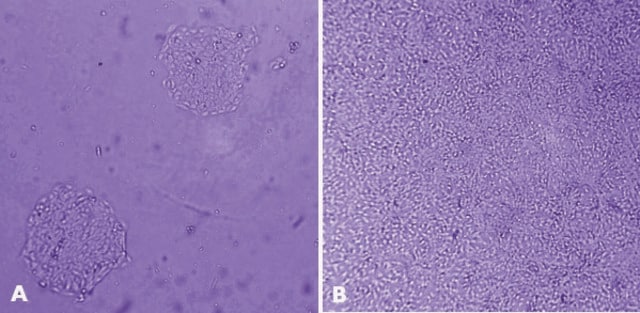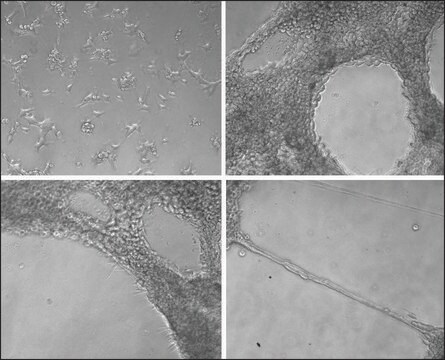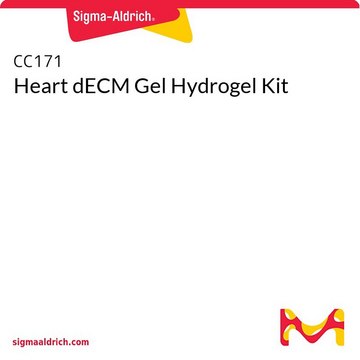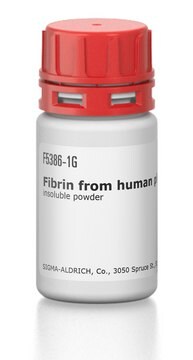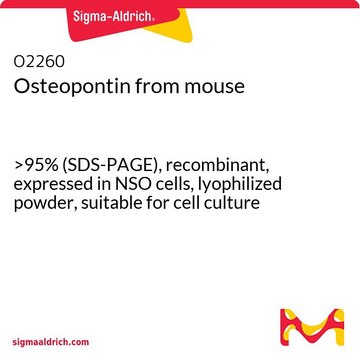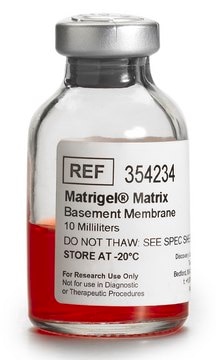추천 제품
애플리케이션
HyStem®-C cell culture scaffold kit has been used to prepare HyStem hydrogels to culture breast cancer cells.
특징 및 장점
Customizable, well characterized and consistent, Hystem-C hydrogel cell culture scaffolds provide a complex, three dimensional environment in which cells are able to proliferate, much as they would in vivo.
Hystem-C enables the attachment of a wide variety of cell types through Gelin-S (thiolated gelatin).
The Hystem-C Trial Kit enables researchers to evaluate the Hystem-C technology in their own hands and confirm that Hystem-C is the right choice for their research.
With Hystem-C, researchers can tailor the incorporation of ECM proteins and growth factors as well as the elasticity of the hydrogel and cell incorporation (encapsulations or top plating) to create the specific 3D environment required by their cells.
Hystem-C has been successfully used to expand human embryonic stem cells, human mesenchymal stem cells, neural progenitor cells, and hepatic progenitor cells.
- Customizable - each distinct cell type in a multicellular organism has its own unique microenvironment. Hystem-C offers the flexibility to tailor the environments of cultured cells to mimic their in vivo counterparts and optimize proliferation and differentiation.
- Synthetic - As a synthetic matrix, Hystem-C offers greater control of the cellular environment than ambiguous extracted ECM alternatives. All components are well characterized and consistently formulated. Hystem-C contains Hyaluronic acid (synthetic), Extralink (synthetic), Gelin-S (porcine), and Water.
- Biologically accurate - Rich in hyaluronic acid and denatured collagen, the Hystem-C hydrogel closely mimics the complex three dimensional cellular environments found in life, providing an optimal environment for culturing your cells.
Hystem-C enables the attachment of a wide variety of cell types through Gelin-S (thiolated gelatin).
The Hystem-C Trial Kit enables researchers to evaluate the Hystem-C technology in their own hands and confirm that Hystem-C is the right choice for their research.
With Hystem-C, researchers can tailor the incorporation of ECM proteins and growth factors as well as the elasticity of the hydrogel and cell incorporation (encapsulations or top plating) to create the specific 3D environment required by their cells.
Hystem-C has been successfully used to expand human embryonic stem cells, human mesenchymal stem cells, neural progenitor cells, and hepatic progenitor cells.
Customizable, well characterized and consistent, Hystem-C hydrogel cell culture scaffolds provide a complex, three dimensional environment in which cells are able to proliferate, much as they would in vivo.
- Customizable - each distinct cell type in a multicellular organism has its own unique microenvironment. Hystem-C offers the flexibility to tailor the environments of cultured cells to mimic their in vivo counterparts and optimize proliferation and differentiation.
- Synthetic - As a synthetic matrix, Hystem-C offers greater control of the cellular environment than ambiguous extracted ECM alternatives. All components are well characterized and consistently formulated. Hystem-C contains Hyaluronic acid (synthetic), Extralink (synthetic), Gelin-S (porcine), and Water.
- Biologically accurate - Rich in hyaluronic acid and denatured collagen, the Hystem-C hydrogel closely mimics the complex three dimensional cellular environments found in life, providing an optimal environment for culturing your cells.
법적 정보
Hystem is a registered trademark of BIOTIME, INC
신호어
Danger
유해 및 위험 성명서
Hazard Classifications
Eye Dam. 1 - Skin Irrit. 2 - Skin Sens. 1
Storage Class Code
10 - Combustible liquids
Independently Tuning the Biochemical and Mechanical Properties of 3D Hyaluronan-Based Hydrogels with Oxime and Diels?Alder Chemistry to Culture Breast Cancer Spheroids.
Baker A E, et al.
Biomacromolecules, 18(12), 4373-4384 (2017)
문서
Hystem 3D hydrogels are based on hyaluronic acid, a major component of the extracellular matrix. 3D cell culture can be done using Hystem hydrogels.
Hyaluronan is a major component of the extracellular matrix. It’s the simplest glycosaminoglycan, and it plays several biological roles.
Cell delivery vehicle are components that can be associated with cells and that allow transplantation in human or animals hosts. These can be natural or synthetic components that will form a gel, embedding the cells.
자사의 과학자팀은 생명 과학, 재료 과학, 화학 합성, 크로마토그래피, 분석 및 기타 많은 영역을 포함한 모든 과학 분야에 경험이 있습니다..
고객지원팀으로 연락바랍니다.
